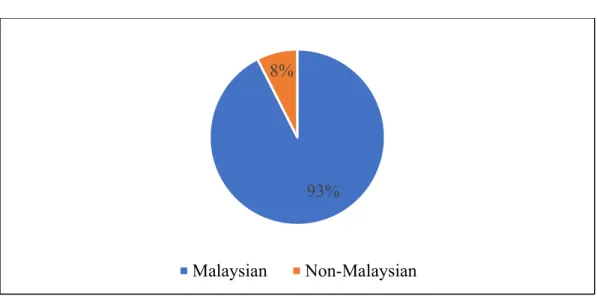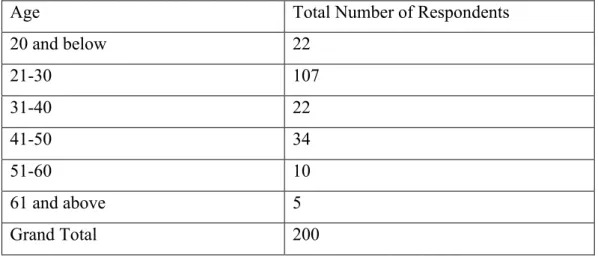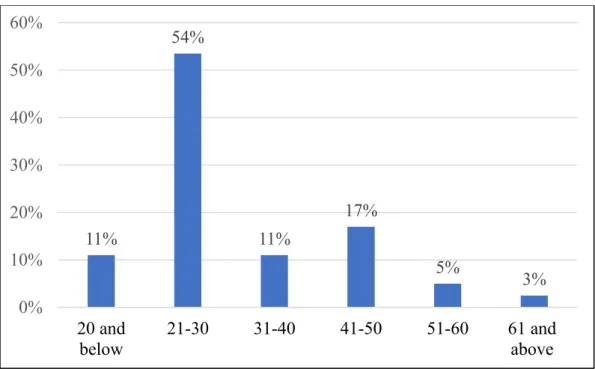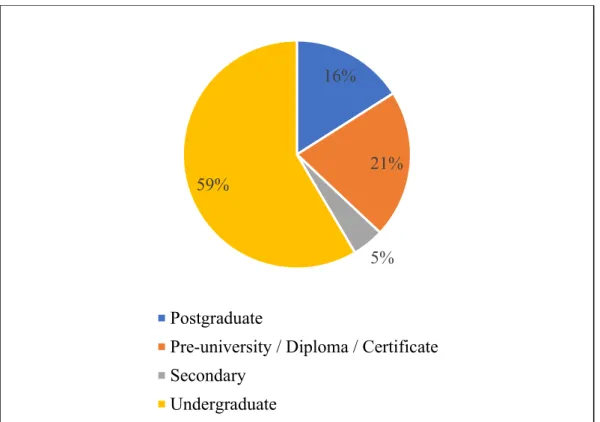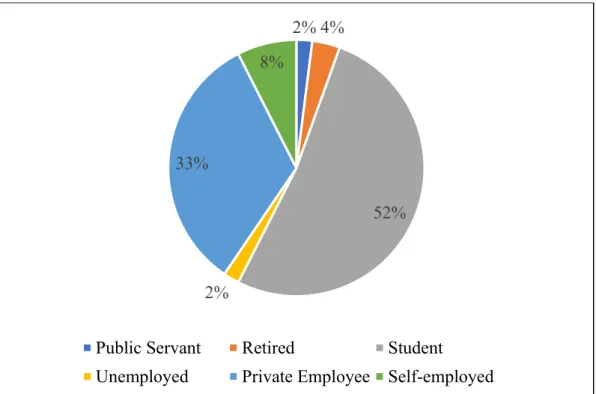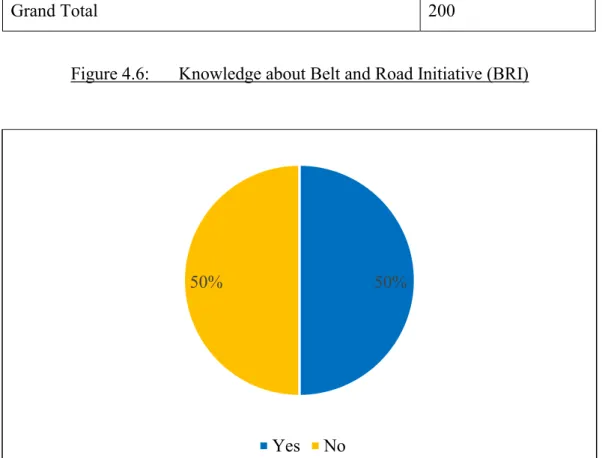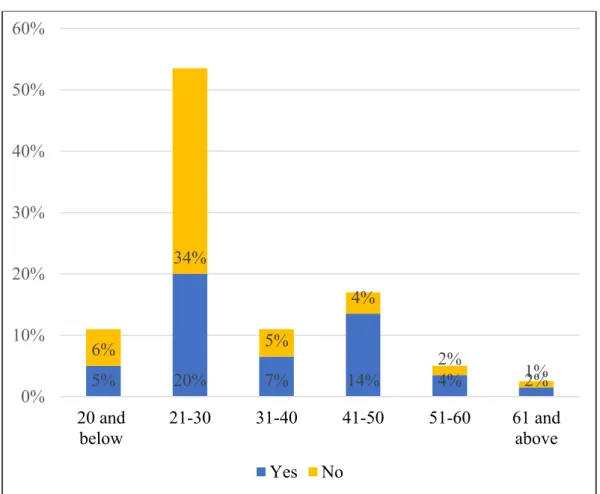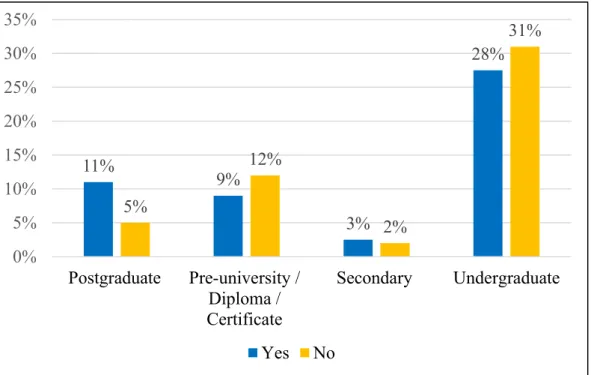Moreover, this study aims to investigate the public understanding towards BRI projects in Malaysia and evaluate the public perception about the involvement of Malaysia in BRI. Despite that, the majority of respondents have a positive perception towards the BRI projects in Malaysia. Various parties are the key drivers to gain better public understanding and perception towards BRI projects in Malaysia.
In addition, the media also plays an important role in increasing public understanding and perception towards BRI projects in Malaysia.
RESEARCH OVERVIEW
- Introduction
- Overview on Belt and Road Initiative
- Participation of Malaysia in Belt and Road Initiative
- Problem Statement
- Research Objectives
- Research Significance
- Organization of Study
This forum served as a summit of participating Belt and Road Initiative members. Dr. Mahathir's participation in the second Belt and Road Forum has attracted Chinese investors to invest in Malaysia. In April 2019, the Prime Minister of Malaysia Tun Dr. Mahathir Mohamad, the Second Belt and Road Forum for International Cooperation.
Belt and Road Initiative (BRI) projects include megaprojects such as East Coast Rail Link (ECRL), Digital Free Trade Zone (DFTZ), and Malaysia-China Kuantan Industrial Park (MCKIP).
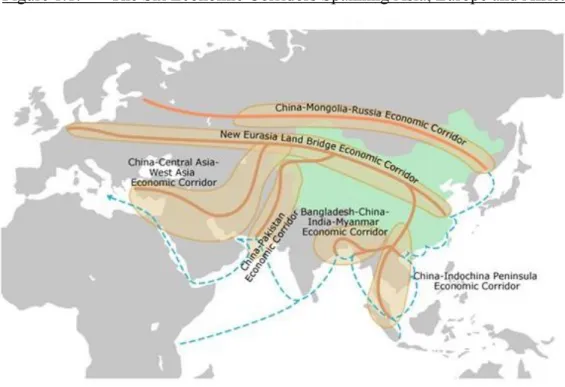
LITERATURE REVIEW
- Introduction
- Malaysia Economic Outlook
- Infrastructure
- Economic Integration
According to Ang (2008), foreign direct investment (FDI) is the key factor for the strong performance of Malaysia's economy. According to Wong (2005), when the host country has better infrastructure, it is more attractive for FDI. According to Yew, Yong and Tan (2010), regional integration is known to be the cause of foreign direct investment (FDI) inflows to countries that are within the regional trade area (RTA).
According to Marinov (2014), regional economic integration would be one of the most important things in developing international economic relations.
METHODOLOGY
- Introduction
- Research Design
- Sampling Design
- Research Instrument
- Data Processing
The questionnaire will contain a qualifying question to screen the respondents who are qualified or disqualified to answer the survey. The public who have heard about BRI before is targeted because they would have some understanding and perception of BRI projects in Malaysia which will be valuable for the study. The questionnaire is established to investigate public understanding and perceptions of BRI in Malaysia.
In 2018, statistics have shown that the percentage of internet users in Malaysia was 87.4% (Malaysian Communications and Multimedia Commission, 2018). The questionnaire has been adapted to the cultural and social context of the audience in Malaysia. Section B focuses on public understanding of Belt and Road Initiative (BRI) projects in Malaysia.
It aims to focus on public perception towards Belt and Road Initiative projects in Malaysia. A pilot test is used to test the questionnaire on a small sample before testing it on a larger sample (Sincero, 2012). The questionnaire was self-administered on August 21, 2019 to August 26, 2019 through convenience sampling.
Feedback was also obtained from respondents to identify ambiguities and potential problems with the questionnaire (Williams, 2003). The respondents who underwent the survey came from anywhere in Malaysia as the questionnaire is distributed through the internet.
DATA ANALYSIS
Introduction
Demographics
As shown in Figure 4.2, 93% of respondents were Malay and 8% of respondents were non-Malaysian. In contrast, the lowest number of respondents collected (3%) came from the 61 and older age group, as this study struggles to reach this age group. According to Figure 4.4, only nine of the respondents (9%) have a secondary level education.
According to Figure 4.6, there is an equal number of respondents who have heard BRI and have not yet, which is 50% for each. The reason why a large percentage of respondents have not heard of BRI before is because they may not be exposed to BRI-related news or projects in their own field.
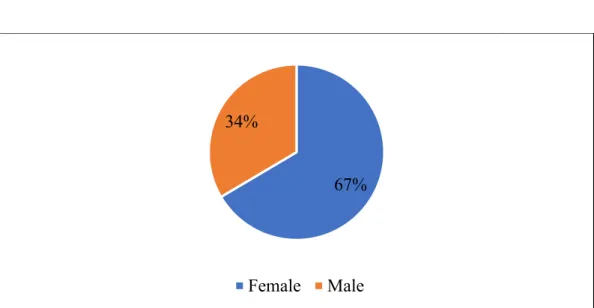
Awareness on Belt and Road Initiative
Based on the graph, the highest number of respondents who have heard and have not heard of BRI are from the age group of 21 to 30. The percentage of respondents who have heard and have not heard of BRI are 20% and 34 %. respectively. In contrast, the 61 and over age group has the lowest percentage of respondents who have heard of BRI and have not heard of it before, which are 1% and 2% respectively.
According to Figure 4.8, it can be seen that majority of the respondents who are of undergraduate level have heard and have not heard of BRI before. The percentage of respondents who have heard and not heard of BRI at undergraduate level are 28% and 31% respectively. Respondents who are at undergraduate level may have heard about BRI before through lecture class, talks and seminars as the syllabus is up to date on the.
In contrast, the lowest percentage of respondents who have heard and have not heard of BRI is at the secondary level, which is 3% and 2%. Based on the graph, 32% of the respondents who have not heard of BRI before are from students. The reason may be due to the lack of information from schools, institutions, government and public sectors or students come from fields unrelated to BRI, such as medical.
In addition, there are two professions that have the same percentage (20%) of respondents who have heard of BRI before, including private employees and students. Private employees may have heard about BRI from private organizations that do business with BRI.

Public Understanding towards Belt and Road Initiative (BRI) Projects in
40% of the respondents who chose the electronic media as a source believed that the government should continue with the current projects. Additionally, 32% of respondents who chose electronic media as their source felt that the government should increase its involvement in more BRI-related projects. Do you know if your country is one of the participating countries in the Belt and Road Initiative (BRI).
According to the pie chart, the majority of respondents (79%) know that their country is one of the participating countries in BRI. 16% of the respondents indicated that they do not know whether their country is one of the participating countries in BRI and 5% of the respondents indicated that their country. Nationality Do you know if your country is one of the participating countries in the Belt and Road Initiative (BRI).
For non-Malaysia, there are 5% of respondents who indicated that they know their country is one of the participating countries in BRI and 1% indicated that they do not know. MCKIP is linked to Kuantan Port, but respondents are unclear about the objectives of the projects resulting in a low percentage (23%). 52% of the respondents do not know the location of DFTZ and 27% of the respondents have the knowledge of the location of DFTZ, which is at KLIA Aeropolis.
19% of the respondents responded on Port Klang and 2% on Subang Airport showed that they do not have the knowledge about the location of DFTZ. In short, 29% of the respondents have heard about DFTZ, but they do not know about the location of DFTZ. This shows that the majority of the respondents do not have the understanding for the ECRL project.
In short, these results clearly showed that most of the respondents who have heard about DFTZ, ECRL and MCKIP do not understand and have no knowledge about these projects.
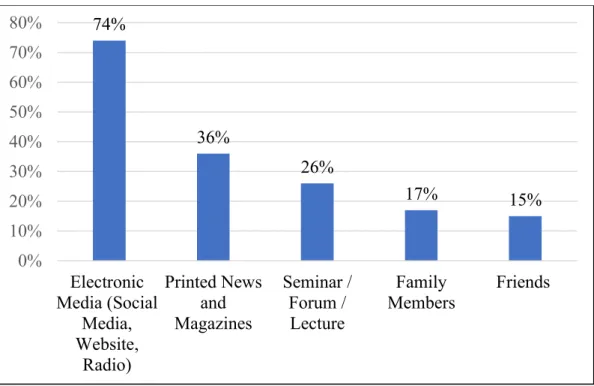
Section C: Perception towards Belt and Road Initiative (BRI) Projects in
Out of 100 respondents, 27% of respondents strongly agree and 47% of respondents agree that BRI will stimulate Malaysia's economy. The graph also shows the respondents who strongly agree and agree that ECRL will create more job opportunities for the country are recorded at 26% and 47% respectively. Additionally, 18% and 45% of respondents strongly agree and agree that DFTZ will lead to intense competition in the local market, respectively.
21% of the respondents strongly agree and 44% of the respondents agree that DFTZ will increase the export of Small and Medium Enterprises (SME). Moreover, the majority of respondents strongly agree (13%) and agree (58%) that MCKIP will increase foreign direct investment in Malaysia. Out of the 100 respondents, about 6% of the respondents disagree that MCKIP will encourage technology and knowledge transfer and 2% of the respondents disagree that ECRL will create more jobs.
This is reflected in the results, as a high percentage of respondents strongly agree and agree that BRI projects are good activities for the country. Level of government participation in BRI projects Total number of respondents The government should continue with the ongoing projects. The pie chart illustrates that 57% of the respondents think that the government should continue with the current projects.
In contrast, only 3% of respondents have negative views of the BRI projects and believe that the government should not continue with the current projects. These findings revealed that the majority of respondents believe that the government should continue and increase their participation in BRI projects as they perceive it to be good for the country's economy.
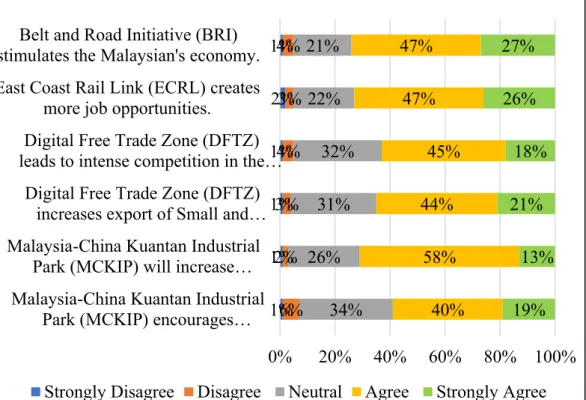
Conclusion
DISCUSSION, CONCLUSION AND IMPLICATIONS
- Introduction
- Summary
- Implications of the Study
- Limitations of the Study
- Recommendations for Future Research
This research paper aims to study the public understanding and perception of Belt and Road Initiative (BRI) projects in Malaysia. Retrieved from https://www.thestar.com.my/news/nation najib-reiterates- benefits-of-china-one-belt-one-road. Retrieved from https://www.scmp.com/special-reports/business/topics/special-report-belt-and-road/article/2112980/beijings-grand-strategy.
Retrieved from https://www.brookings.edu/blog/future-development future-development-reads-chinas-belt-and-road-itiative/. Retrieved from https://www.business.hsbc.com.my/en-gb/my/campaign/belt-and-road. Retrieved from https://www.thestar.com.my/opinion/columnists/walking-on-the-edge seizing-the-belt-and-road-opportunity-three-key-memoranda-of-understanding-highlight-our -stake.
Retrieved from https://www.mcmc.gov.my/skmmgovmy/media/General/pdf/Internet-Users-Survey-2018-(Infographic).pdf. Retrieved from https://www.researchgate.net/publication/261296108_Foreign_Direct_ln vestment_in_Malaysia_Trends_and_Prospects. Retrieved from https://www.oboreurope.com/en/first-belt-road-forum/. Influence of questionnaire design in self-administered surveys.
Retrieved from https://www.theborneopost.com exam-oriented-education-kills-creativity/. Measurement scales [blog post]. The Belt and Road Initiative is great: Malaysian Prime Minister Mahathir. https://www.channelnewsasia.com/news/asia/mahathir-endorse-belt-and-road-china-11481782.
